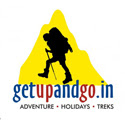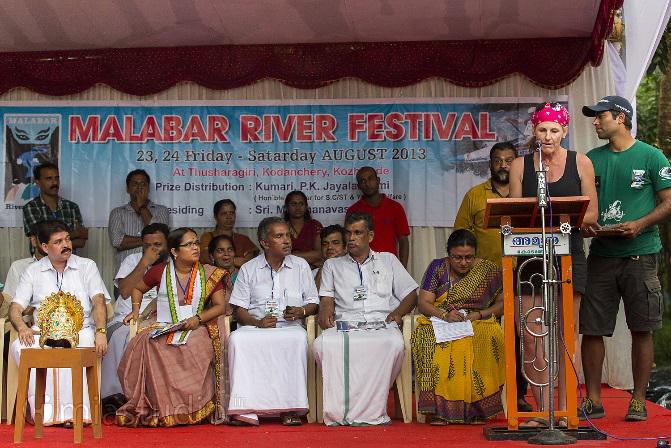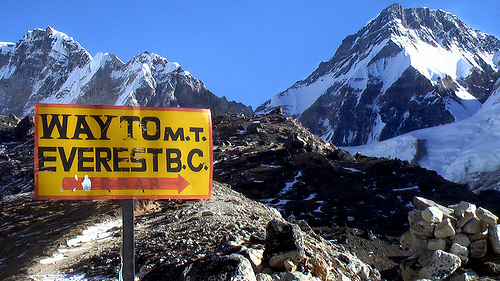Until relatively recently, apart from climbing and trekking in the Himalayas, and some white water rafting, mainly on the Ganges River, India was not known internationally as an ‘adventure destination’. But that is starting to change, and there is now a growing interest in a variety of adventure sports across India, and something that is really starting to take off is white water kayaking.
I have just returned home from a month in India, where I spend a lot of time every year, predominantly in the mountains climbing. I had gone to climb and guide in the Himalayas in Ladakh, in the north of the country. After a rainy and snowy climb I decided it was time to head down to the south of India for some warmth. So after a thirteen hour, frankly slightly terrifying, drive through the night from Leh (the capital of Ladakh) to Srinagar (the capital of Jamu and Kashmir)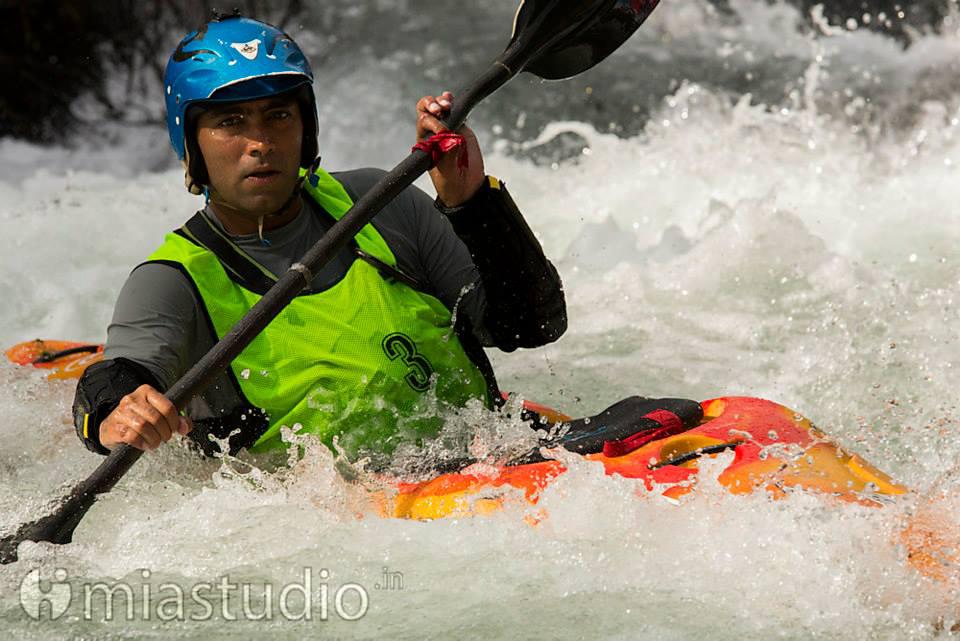
on mountain roads with sheer vertical drops just inches from the wheels of the vehicle, I boarded a flight to Delhi and then flew down to Kozhikode (formally known as Calicut) in Kerela.
I had some friends taking part in the inaugural Malabar River Festival, a white water kayaking festival and first of its kind eventin India. The festival consisted of a series of downriver extreme adventure races, being held in the small town of Kodenchery, Kerala on the Chalipuzha and Iruvanjhipuzha Rivers.
I have to say, as a person who, before now, hardly knew the front end of a kayak from the back, it was an amazing few days, with a great crowd of people who are both passionate and excited about their sport.The overall aim of the festivalwas to both promote kayaking in the south on India, and also to highlight Kerela as an adventure tourism destination. It also became rapidly clear, that the aim of the bulk of the participants, who had come from all over India and indeed from all over the world, was to have a good time… and this they certainly did. It was a great bunch of people who, despite my total ignorance of their sport, welcomed me with open arms, 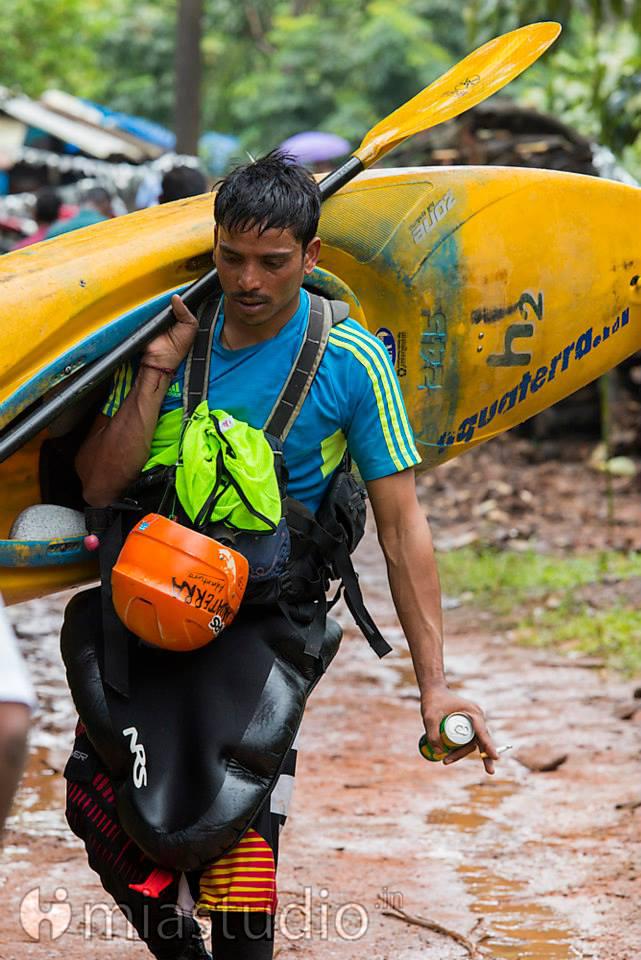 and made me feel just like one of the group. I pretty quickly found myself volunteering (or being volunteered, I’m still not sure which!) to help out behind the scenes. Though somehow along the way, this ceased to be ‘behind the scenes’ and I found myself up on stage with a microphone in my hand for the two days of the festival, doing ‘commentating’, making general announcements and then finally, just as I thought my ‘job’ was done, being talked into announcing the winners during the prize giving ceremony; during which, I might add, I felt decidedly under dressed in my scruffy shorts, standing amongst the various dignitaries, including the State Minister for Tourism, all dressed is saris and formal attire.
and made me feel just like one of the group. I pretty quickly found myself volunteering (or being volunteered, I’m still not sure which!) to help out behind the scenes. Though somehow along the way, this ceased to be ‘behind the scenes’ and I found myself up on stage with a microphone in my hand for the two days of the festival, doing ‘commentating’, making general announcements and then finally, just as I thought my ‘job’ was done, being talked into announcing the winners during the prize giving ceremony; during which, I might add, I felt decidedly under dressed in my scruffy shorts, standing amongst the various dignitaries, including the State Minister for Tourism, all dressed is saris and formal attire.
The Western Ghats of Kerela are an amazing mountain range that runs for hundreds of kilometers along the western coast of India and are the source of numerous river systems, many as yet unexplored by white water kayakers. 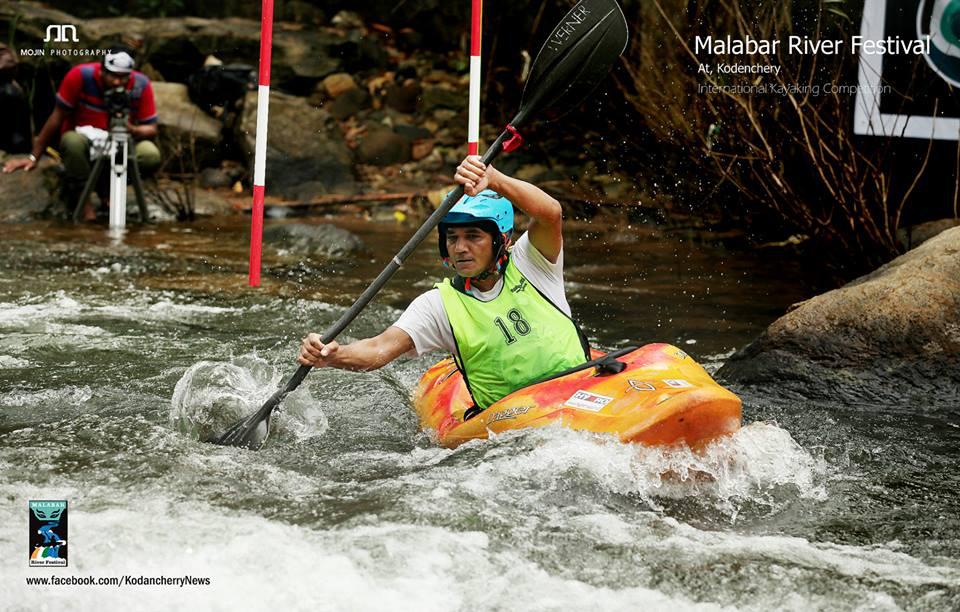
A group of white water kayakers from Bangalore and Chennai, going by the name Southern River Runners, got together and have worked as pioneers of the sport in India’s south, battling everything from the lack of decent kayaking equipment available in India, to general ignorance and apathy from various officials, who have frequently tried to hinder kayakers from exploring the rivers of Karnataka. Indeed there are recent reports of a forestry official actually arresting and threatening to detain a group of kayakers who were running a non-commercial trip on a river that is used by commercial rafting companies. Fortunately though, district officials in Kerala saw the tourism and commercial potential for white water kayaking in the district, and so were very supportive of the idea of the Malabar River Festival, which was six months in the planning and was inaugurated by the State Minister for Tourism.
During my days at the river I had a crash course in all things white water kayaking; and can now relatively confidently impart the following information, of primary interest to actual kayaking readers I’m sure; that the festival had a race launch ramp, the first ever to be used in India;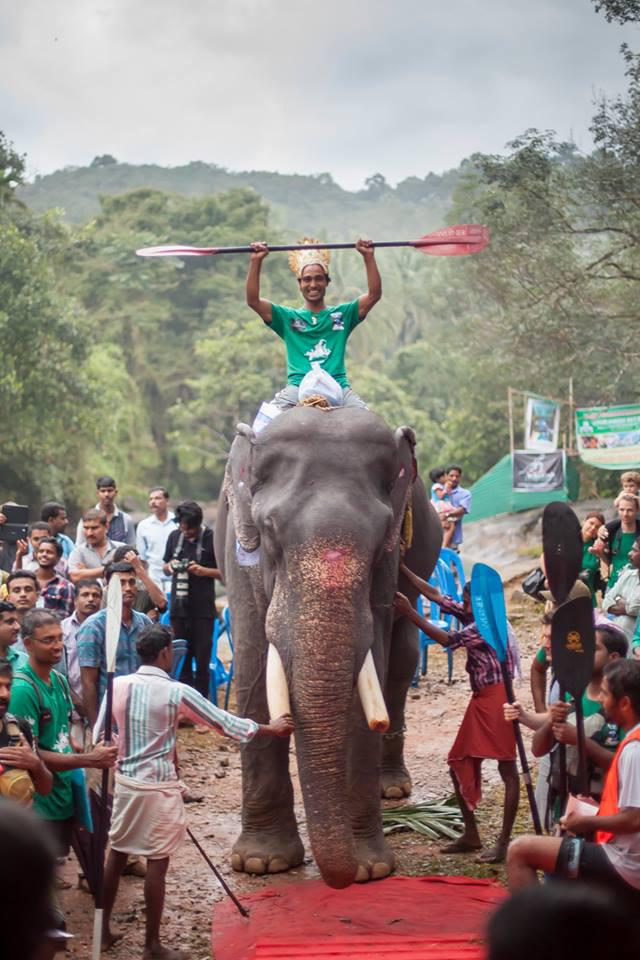 twenty entrants in the pro category and ten entrants in the beginners category who came from all over India, the UK, USA, Italy, Denmark and Nepal, and that there were races ranging from a challenging slalom course with 9 gates (3 upstream and 6 downstream), to an individual down river race on theClass IV+ Iruvanjhipuza River. There was even a women’s race, which, from my vantage point on the stage, I saw drew a great deal of attention both from the male spectators who were amazed at the skill and speed of the female competitors, and from the women spectators who had never before seen such a thing, let alone contemplated actually getting in a kayak themselves. There were monetary prizes for all races and the grand prize winner of the day, a young Indian kayaker, from Rishikesh on the Ganges River, was crowned the ‘River Raja’, paraded around on an elephant and took home considerable prize money.
twenty entrants in the pro category and ten entrants in the beginners category who came from all over India, the UK, USA, Italy, Denmark and Nepal, and that there were races ranging from a challenging slalom course with 9 gates (3 upstream and 6 downstream), to an individual down river race on theClass IV+ Iruvanjhipuza River. There was even a women’s race, which, from my vantage point on the stage, I saw drew a great deal of attention both from the male spectators who were amazed at the skill and speed of the female competitors, and from the women spectators who had never before seen such a thing, let alone contemplated actually getting in a kayak themselves. There were monetary prizes for all races and the grand prize winner of the day, a young Indian kayaker, from Rishikesh on the Ganges River, was crowned the ‘River Raja’, paraded around on an elephant and took home considerable prize money.
The organisers of the event, had estimated an original audience attendance of roughly 1,500 people, but to everyone’s surprise there were over 5,000 people who turned out to watch this novel event. This has led to the sanctioning of a Kerala Kayaking Academy, to be built to promote local interest and talent. The festival will run again next year between sometime between the 15th and 30th July, and it is hoped to increase the number of participants to 50. I’ve been invited back next year to make myself useful with the microphone again and, just possibly, I might even be enticed into a kayak and out onto the river.
The Malabar River Festival (www.malabarfestival.in) was organized by: Madras Fun Tools
